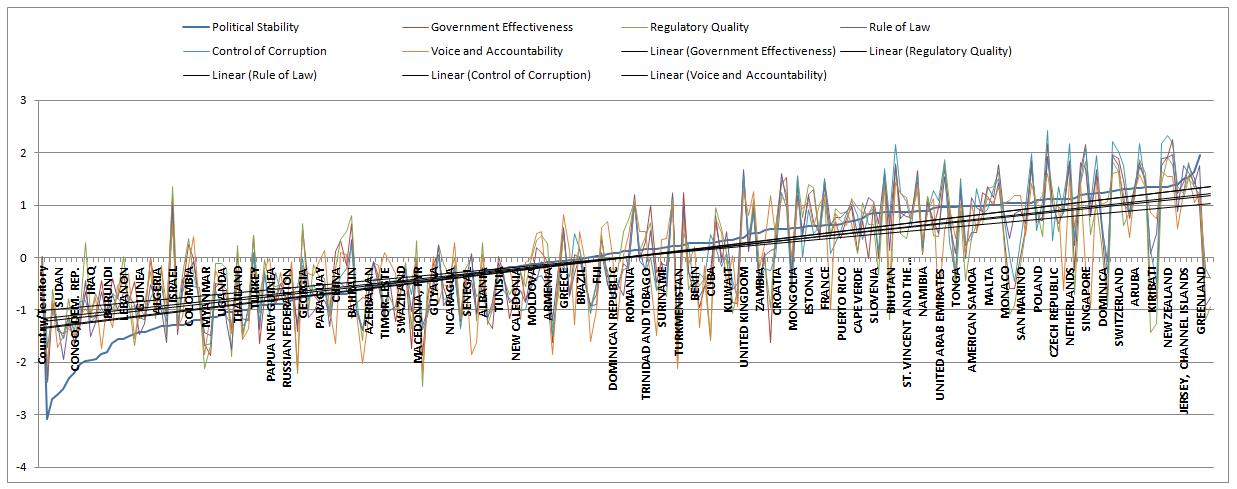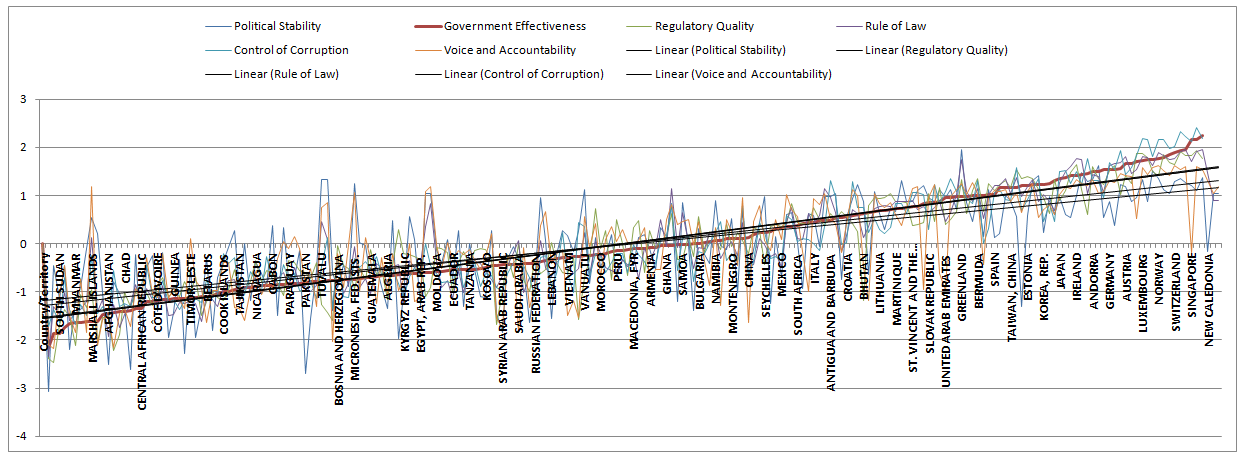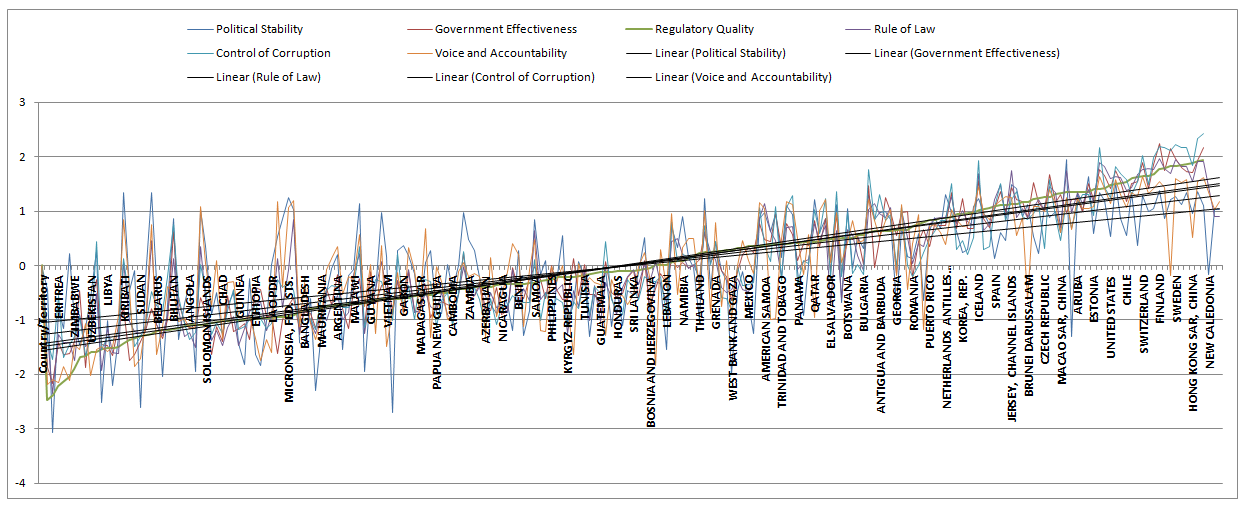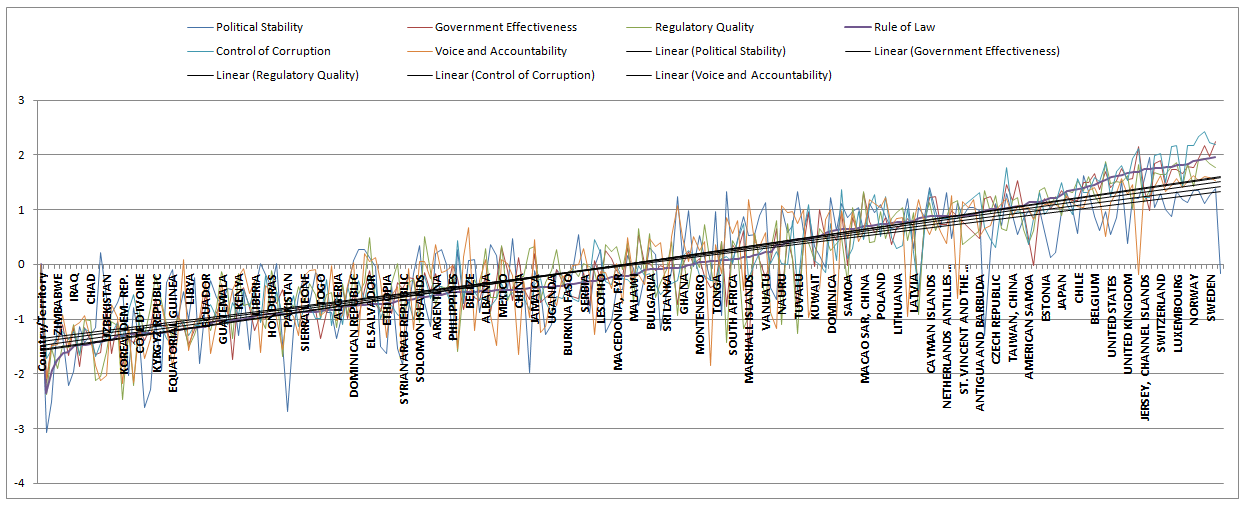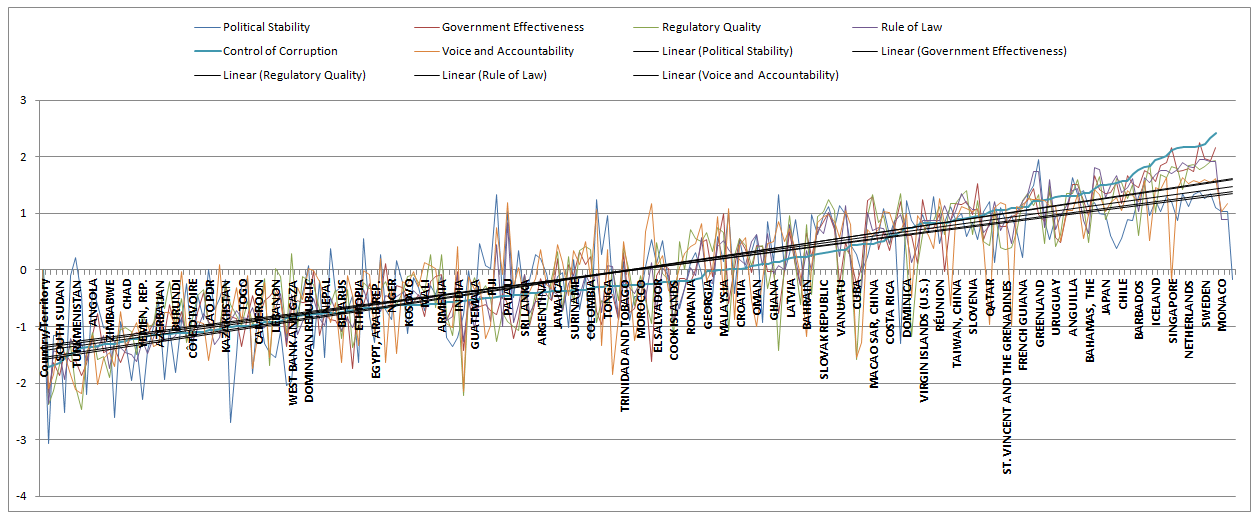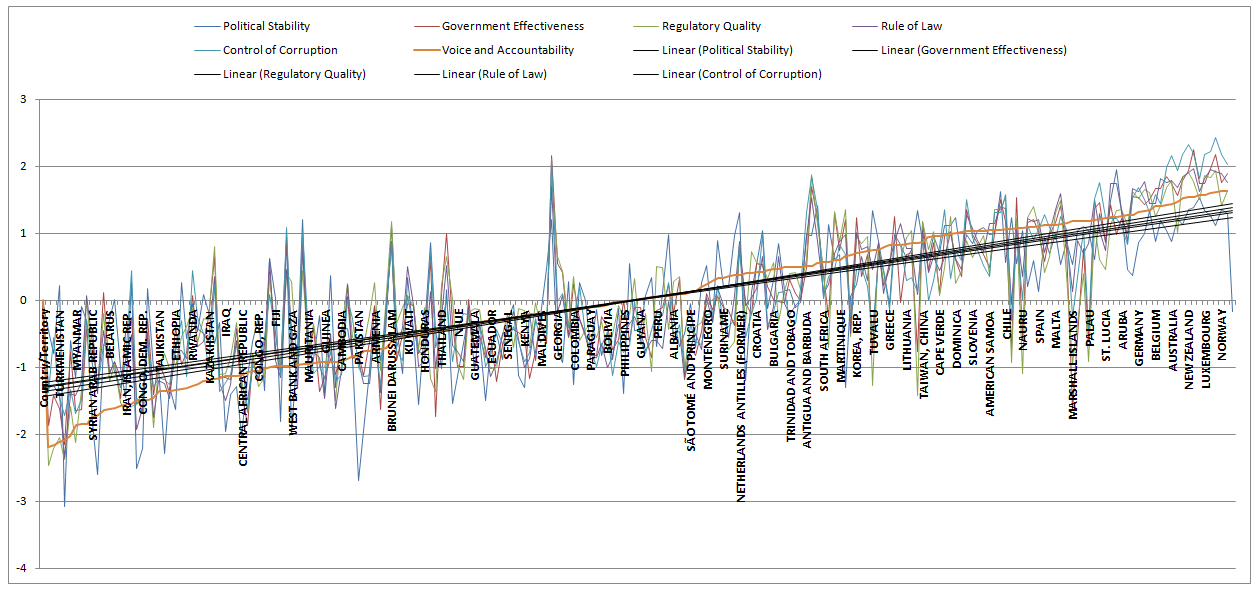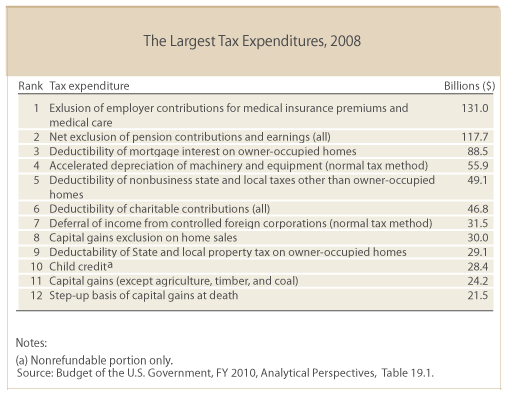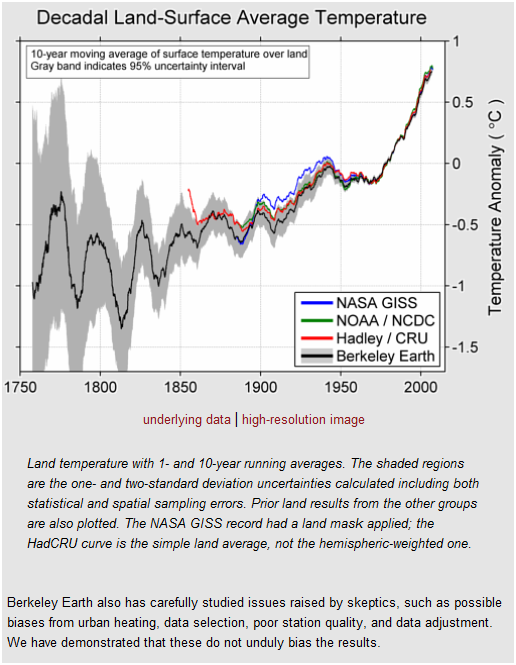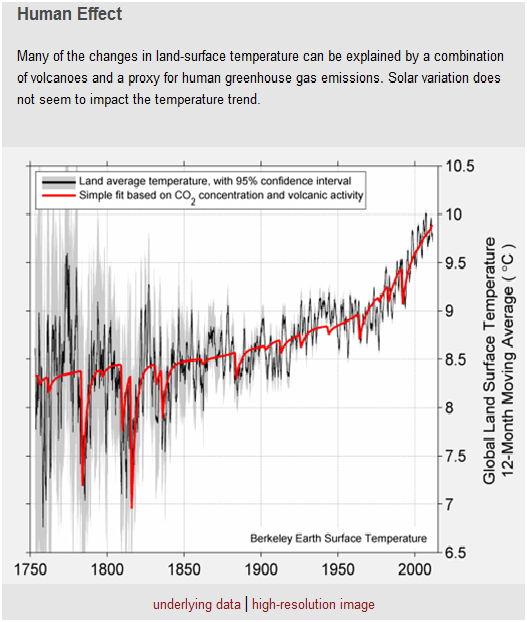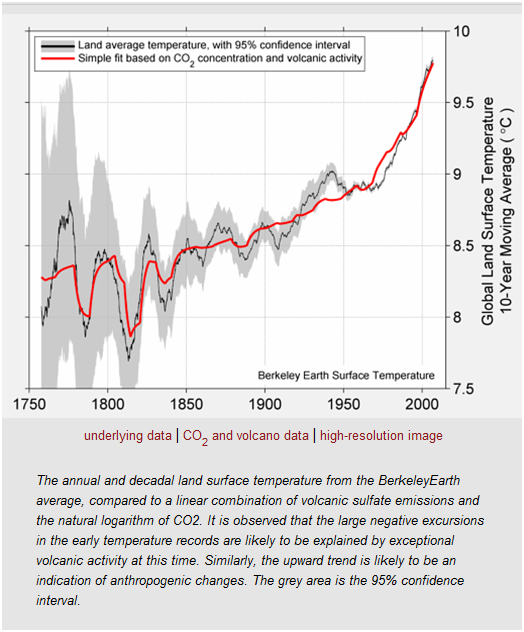Here is an interesting chart of the top 51 overall donors to the current political campaign.
The web site is here.
You can download my spreadsheet with the charts here (.xls).
This chart is the sum total of direct campaign contributions and superpac contributions.
The total Democratic contributions for the top 101 donors is $187,590,262.
The total Republican contributions for the top 101 donors is $326,833,735.

Here is the top 20 donors by industry.

I was wondering why I did not see more Koch brothers so I did a search of Kochs that were donors and surprisingly almost all of them were Republican contributors. I am sure there is no relation – right?
| Contributor |
Occupation |
Date |
Amount |
Recipient |
| KOCH, WILLIAM | OXBOW CORP./PRESIDENT |
9/12/2011 |
$250,000 |
Restore Our Future |
| WEST PALM BEACH,FL 33401 | ||||
| KOCH, ANNA B MS | SELF EMPLOYED/VOLUNTEER |
2/29/2012 |
$30,800 |
National Republican Senatorial Cmte (R) |
| WICHITA,KS 67202 | ||||
| KOCH, CHARLES | KOCH INDUSTRIES |
10/3/2011 |
$30,800 |
Republican National Cmte (R) |
| WICHITA,KS 67202 | ||||
| KOCH, CHARLES MR | KOCH INDUSTRIES |
5/31/2011 |
$30,800 |
Republican National Cmte (R) |
| WICHITA,KS 67201 | ||||
| KOCH, CHRISTOPHER MR | NEW ERA CAPITAL |
6/22/2012 |
$30,800 |
Republican National Cmte (R) |
| BUFFALO,NY 14202 | ||||
| KOCH, DAVID H MR | KOCH INDUSTRIES/EXECUTIVE VP |
2/13/2012 |
$30,800 |
National Republican Congressional Cmte (R) |
| WICHITA,KS 67220 | ||||
| KOCH, DAVID H MR | KOCH INDUSTRIES, INC. |
6/27/2011 |
$30,800 |
National Republican Senatorial Cmte (R) |
| NEW YORK,NY 10065 | ||||
| KOCH, ELIZABETH B MRS | HOMEMAKER |
4/12/2012 |
$30,800 |
National Republican Congressional Cmte (R) |
| WICHITA,KS 67201 | ||||
| KOCH, JULIA F MRS | HOMEMAKER/HOMEMAKER |
2/13/2012 |
$30,800 |
National Republican Congressional Cmte (R) |
| WICHITA,KS 67201 | ||||
| KOCH, JULIA F MRS | HOMEMAKER |
7/22/2012 |
$30,800 |
Republican National Cmte (R) |
| WICHITA,KS 67201 | ||||
| KOCH, STEVEN A | CREDIT SUISSE |
9/30/2011 |
$30,800 |
DNC Services Corp (D) |
| CHICAGO,IL 60614 | ||||
| KOCH, WILLIAM I MR | OXBOW GROUP |
1/25/2011 |
$30,400 |
National Republican Senatorial Cmte (R) |
| PALM BEACH,FL 33480 | ||||
| KOCH, C CHASE MR | KOCH NITROGEN COMPANY/VICE PRESIDEN |
2/29/2012 |
$30,000 |
National Republican Senatorial Cmte (R) |
| WICHITA,KS 67201 | ||||
| KOCH, ELIZABETH MS | HOMEMAKER |
6/12/2012 |
$30,000 |
National Republican Senatorial Cmte (R) |
| WICHITA,KS 67201 | ||||
| KOCH, JUDY A MRS | RETIRED |
4/26/2012 |
$20,000 |
Republican National Cmte (R) |
| FREDERICKSBURG,TX 78624 | ||||
| KOCH, C CHASE MR | KOCH NITROGEN COMPANY |
3/29/2012 |
$15,400 |
National Republican Congressional Cmte (R) |
| WICHITA,KS 67201 | ||||
| KOCH, C CHASE MR | KOCH FERTILIZER L.L.C. |
3/29/2012 |
$15,400 |
Republican National Cmte (R) |
| WICHITA,KS 67201 | ||||
| KOCH INDUSTRIES INC PAC |
2/23/2012 |
$15,000 |
Republican National Cmte (R) | |
| WASHINGTON,DC 20005 | ||||
| KOCH, ANNA B MS | WESLEY MEDICAL CENTER |
3/29/2012 |
$15,000 |
National Republican Congressional Cmte (R) |
| WICHITA,KS 67214 | ||||
| KOCH, ANNA B MS | HOMEMAKER |
3/29/2012 |
$15,000 |
Republican National Cmte (R) |
| WICHITA,KS 67201 | ||||
| KOCH, CHARLES G MR | KOCH INDUSTRIES |
6/12/2012 |
$10,000 |
National Republican Senatorial Cmte (R) |
| WICHITA,KS 67201 | ||||
| KOCH, WILLIAM | OXBOW GROUP |
3/20/2012 |
$7,500 |
Rooney, Tom (R) |
| PALM BEACH,FL 33480 | ||||
| KOCH, WILLIAM | OXBOW GROUP |
3/20/2012 |
$7,500 |
Rooney, Tom (R) |
| PALM BEACH,FL 33480 | ||||
| KOCHEL, DAVID D MR | REDWAVE COMMUNICATIONS |
8/9/2012 |
$7,500 |
Republican National Cmte (R) |
| DES MOINES,IA 50312 | ||||
| KOCH, ROBERT L MR II | KOCH ENTERPRISES |
5/1/2012 |
$6,000 |
Republican National Cmte (R) |
| EVANSVILLE,IN 47714 | ||||
| KOCH, CATHY MRS | RETIRED |
7/30/2012 |
$5,300 |
Republican National Cmte (R) |
| JOHNSTON,IA 50131 | ||||
| KOCH INDUSTRIES INC POLITICAL ACTION COM |
3/31/2012 |
$5,000 |
Congressional Leadership Fund | |
| WASHINGTON,DC 20005 | ||||
| KOCH INDUSTRIES INC POLITICAL ACTION COM |
12/16/2011 |
$5,000 |
Congressional Leadership Fund | |
| WASHINGTON,DC 20005 | ||||
| KOCH, ANNA |
3/14/2012 |
$5,000 |
Koch Industries | |
| WICHITA,KS 67201 | ||||
| KOCH, ANNA | HOMEMAKER |
8/9/2011 |
$5,000 |
Koch Industries |
| WICHITA,KS 67201 | ||||
| KOCH, C | KOCH FERTILIZER LLC |
8/9/2011 |
$5,000 |
Koch Industries |
| WICHITA,KS 67201 | ||||
| KOCH, C C | KOCH FERTILIZER LLC |
3/14/2012 |
$5,000 |
Koch Industries |
| WICHITA,KS 67220 | ||||
| KOCH, CHARLES | KOCH INDUSTRIES INC/CHAIRMAN & CEO |
12/5/2011 |
$5,000 |
Koch Industries |
| WICHITA,KS 67220 | ||||
| KOCH, CHARLES | KOCH INDUSTRIES INC/CHAIRMAN & CEO |
2/8/2012 |
$5,000 |
Koch Industries |
| WICHITA,KS 67220 | ||||
| KOCH, CHARLES J MR | RET. |
8/10/2012 |
$5,000 |
Republican National Cmte (R) |
| BRATENAHL,OH 44108 | ||||
| KOCH, CHRISTOPHER H | NEW ERA CAP COMPANY, INC. |
12/13/2011 |
$5,000 |
New Era Cap Co |
| BUFFALO,NY 14202 | ||||
| KOCH, DAVID | KOCH CHEM TECH GROUP LLC |
6/30/2011 |
$5,000 |
Koch Industries |
| NEW YORK,NY 10021 | ||||
| KOCH, ELIZABETH B | KOCH BUSINESS HOLDINGS LLC |
12/5/2011 |
$5,000 |
Koch Industries |
| WICHITA,KS 67201 | ||||
| KOCH, ELIZABETH B | KOCH BUSINESS HOLDINGS LLC |
2/8/2012 |
$5,000 |
Koch Industries |
| WICHITA,KS 67201 | ||||
| KOCH, HEATHER A | CME, 20 S. WACKER DR., CHICAGO |
4/14/2011 |
$5,000 |
Chicago Mercantile Exchange |
| OAK BROOK,IL 60523 | ||||
| KOCH, KARL MR | EAN HOLDINGS, LLC |
2/29/2012 |
$5,000 |
Enterprise Rent-A-Car |
| THE WOODLANDS,TX 77382 | ||||
| KOCH, KARL MR | EAN HOLDINGS, LLC |
4/29/2011 |
$5,000 |
Enterprise Rent-A-Car |
| THE WOODLANDS,TX 77382 | ||||
| KOCH, LINDSEY | N/A |
12/13/2011 |
$5,000 |
New Era Cap Co |
| BUFFALO,NY 14202 | ||||
| KOCH, ROBERT L MR II | KOCH ENTERPRISES |
7/20/2012 |
$5,000 |
National Republican Congressional Cmte (R) |
| EVANSVILLE,IN 47714 | ||||
| KOCH, WILLIAM | OXBOW CARBON & MINERALS LLC |
9/22/2011 |
$5,000 |
Oxbow Carbon & Minerals Holdings |
| WEST PALM BEACH,FL 33401 | ||||
| KOCHEL, DAVID D | JDK PUBLIC AFFAIRS LLC |
8/21/2012 |
$5,000 |
Hawkeye PAC (R) |
| DES MOINES,IA 50312 | ||||
| Kochman, Cary Allan Mr | Citigroup |
9/5/2012 |
$5,000 |
Republican National Cmte (R) |
| Wilmette,IL 60091 | ||||
| KOCH, BRIDGET | NA |
3/31/2011 |
$4,200 |
Freedom Project (R) |
| PALM BEACH,FL 33480 | ||||
| KOCH, DAVID H MR | KOCH INDUSTRIES INC. |
7/22/2012 |
$4,200 |
Republican National Cmte (R) |
| NEW YORK,NY 10065 | ||||
| KOCH, WILLIAM | OXBOW CORP. |
10/31/2011 |
$4,200 |
Freedom Project (R) |
| WEST PALM BEACH,FL 33401 | ||||
| KOCH, JULIA F MRS | HOMEMAKER/HOMEMAKER |
1/24/2012 |
$3,762 |
National Republican Senatorial Cmte (R) |
| WICHITA,KS 67201 | ||||
| KOCH, CHRISTOPHER MR | NEW ERA CAPITAL |
7/31/2012 |
$3,550 |
Oklahoma Leadership Council (R) |
| BUFFALO,NY 14202 | ||||
| KOCH, CHRISTOPHER MR | KOHLER CO. |
7/31/2012 |
$3,550 |
Republican Party of Idaho (R) |
| BUFFALO,NY 14202 | ||||
| KOCH, CHRISTOPHER MR | NEW ERA CAPITAL |
7/31/2012 |
$3,550 |
Republican State Cmte of Massachusetts (R) |
| BUFFALO,NY 14202 | ||||
| KOCH, CHRISTOPHER MR | NEW ERA CAPITAL |
7/31/2012 |
$3,550 |
Vermont Repub Federal Elections Cmte (R) |
| BUFFALO,NY 14202 | ||||
| KOCH, LARRY J | DELOITTE & TOUCHE LLP |
1/31/2012 |
$3,500 |
Deloitte LLP |
| WILTON,CT 06897 | ||||
| KOCH, ERIC ALLAN | STATE OF INDIANA |
8/2/2012 |
$2,550 |
Indiana Republican State Central Cmte (R) |
| BEDFORD,IN 47421 | ||||
| KOCH FERTILIZER, LLC |
9/7/2012 |
$2,500 |
Romney, Mitt (R) | |
| WICHITA,KS 67201 | ||||
| KOCH FERTILIZER, LLC |
9/7/2012 |
$2,500 |
Romney, Mitt (R) | |
| WICHITA,KS 67201 | ||||
| KOCH, ANNA |
3/12/2012 |
$2,500 |
Allen, George (R) | |
| WICHITA,KS 67201 | ||||
| KOCH, ANNA |
3/12/2012 |
$2,500 |
Allen, George (R) | |
| WICHITA,KS 67201 | ||||
| KOCH, ANNA | N/A |
3/6/2012 |
$2,500 |
Mandel, Josh (R) |
| WICHITA,KS 67201 | ||||
| KOCH, ANNA | N/A |
3/6/2012 |
$2,500 |
Mandel, Josh (R) |
| WICHITA,KS 67201 | ||||
| KOCH, ANNA B | HOMEMAKER |
3/5/2012 |
$2,500 |
Berg, Rick (R) |
| WICHITA,KS 67201 | ||||
| KOCH, ANNA B | HOMEMAKER |
3/5/2012 |
$2,500 |
Berg, Rick (R) |
| WICHITA,KS 67201 | ||||
| KOCH, ANNA B | NONE |
3/14/2012 |
$2,500 |
Rehberg, Denny (R) |
| WICHITA,KS 67201 | ||||
| KOCH, ANNA B | NONE |
3/14/2012 |
$2,500 |
Rehberg, Denny (R) |
| WICHITA,KS 67201 | ||||
| KOCH, ANNA B MS | HOMEMAKER |
9/7/2012 |
$2,500 |
Romney, Mitt (R) |
| WICHITA,KS 67201 | ||||
| KOCH, ANNA B MS | HOMEMAKER |
9/7/2012 |
$2,500 |
Romney, Mitt (R) |
| WICHITA,KS 67201 | ||||
| KOCH, ANNA MRS | N/A |
3/19/2012 |
$2,500 |
Barrasso, John A (R) |
| WICHITA,KS 67201 | ||||
| KOCH, ANNA MRS | HOMEMAKER |
6/28/2012 |
$2,500 |
Pompeo, Mike (R) |
| WICHITA,KS 67201 | ||||
| KOCH, ANNA MRS | HOMEMAKER |
6/28/2012 |
$2,500 |
Pompeo, Mike (R) |
| WICHITA,KS 67201 | ||||
| KOCH, BARBARA G MRS | RETIRED |
9/29/2012 |
$2,500 |
Romney, Mitt (R) |
| PLYMOUTH,MN 55441 | ||||
| KOCH, BRIDGET | NONE |
5/20/2012 |
$2,500 |
Rooney, Tom (R) |
| JUNO BEACH,FL 33408 | ||||
| KOCH, BRIDGET | NONE |
5/20/2012 |
$2,500 |
Rooney, Tom (R) |
| JUNO BEACH,FL 33408 | ||||
| KOCH, BRIDGET | HOMEMAKER |
3/31/2011 |
$2,500 |
Boehner, John (R) |
| PALM BEACH,FL 33480 | ||||
| KOCH, BRIDGET | HOMEMAKER |
3/31/2011 |
$2,500 |
Boehner, John (R) |
| PALM BEACH,FL 33480 | ||||
| KOCH, BRIDGET MS | HOMEMAKER |
5/10/2011 |
$2,500 |
West, Allen (R) |
| PALM BEACH,FL 33480 | ||||
| KOCH, BRIDGET MS | HOMEMAKER |
5/10/2011 |
$2,500 |
West, Allen (R) |
| PALM BEACH,FL 33480 | ||||
| KOCH, BRIDGET ROONEY MS |
1/18/2012 |
$2,500 |
Romney, Mitt (R) | |
| PALM BEACH,FL 33480 | ||||
| KOCH, C CHASE | KOCH FERTILIZER LLC |
3/5/2012 |
$2,500 |
Berg, Rick (R) |
| WICHITA,KS 67201 | ||||
| KOCH, C CHASE | KOCH FERTILIZER LLC |
3/5/2012 |
$2,500 |
Berg, Rick (R) |
| WICHITA,KS 67201 | ||||
| KOCH, C CHASE | KOCH FERTILIZER LLC |
3/6/2012 |
$2,500 |
Mandel, Josh (R) |
| WICHITA,KS 67201 | ||||
| KOCH, C CHASE | KOCH FERTILIZER LLC |
3/6/2012 |
$2,500 |
Mandel, Josh (R) |
| WICHITA,KS 67201 | ||||
| KOCH, C CHASE | KOCH FERTILIZER LLC |
3/14/2012 |
$2,500 |
Rehberg, Denny (R) |
| WICHITA,KS 67201 | ||||
| KOCH, C CHASE | KOCH FERTILIZER LLC |
3/14/2012 |
$2,500 |
Rehberg, Denny (R) |
| WICHITA,KS 67201 | ||||
| KOCH, CATHY MS | RETIRED |
7/30/2012 |
$2,500 |
Romney, Mitt (R) |
| JOHNSTON,IA 50131 | ||||
| KOCH, CHARLES | KOCH INDUSTRIES, INC. |
6/7/2012 |
$2,500 |
Allen, George (R) |
| WICHITA,KS 67201 | ||||
| KOCH, CHARLES | KOCH INDUSTRIES, INC. |
6/7/2012 |
$2,500 |
Allen, George (R) |
| WICHITA,KS 67201 | ||||
| KOCH, CHARLES | KOCH INDUSTRIES |
6/12/2012 |
$2,500 |
Berg, Rick (R) |
| WICHITA,KS 67201 | ||||
| KOCH, CHARLES | KOCH INDUSTRIES, INC. |
6/20/2012 |
$2,500 |
Mack, Connie (R) |
| WICHITA,KS 67201 | ||||
| KOCH, CHARLES | KOCH INDUSTRIES |
6/15/2012 |
$2,500 |
Mandel, Josh (R) |
| WICHITA,KS 67201 | ||||
| KOCH, CHARLES CHASE | KOCH FERTILIZER |
6/29/2012 |
$2,500 |
Mourdock, Richard E (R) |
| WICHITA,KS 67201 | ||||
| KOCH, CHARLES CHASE | KOCH FERTILIZER |
6/13/2012 |
$2,500 |
Mourdock, Richard E (R) |
| WICHITA,KS 67201 | ||||
| KOCH, CHARLES G MR | KOCH INDUSTRIES, INC |
8/28/2012 |
$2,500 |
Romney, Mitt (R) |
| WICHITA,KS 67201 | ||||
| KOCH, CHARLES G MR | KOCH INDUSTRIES, INC |
8/28/2012 |
$2,500 |
Romney, Mitt (R) |
| WICHITA,KS 67201 | ||||
| KOCH, CHARLES J MR | RETIRED |
8/10/2012 |
$2,500 |
Romney, Mitt (R) |
| BRATENAHL,OH 44108 | ||||
| KOCH, CHARLES J MR | RETIRED |
8/10/2012 |
$2,500 |
Romney, Mitt (R) |
| BRATENAHL,OH 44108 | ||||
| KOCH, CHARLES JAMES | BOSTON BEER CO. |
7/15/2011 |
$2,500 |
Olver, John W (D) |
| NEWTON,MA 02458 | ||||
| KOCH, CHARLES JAMES MR | BOSTON BEER/BREWER |
12/16/2011 |
$2,500 |
Romney, Mitt (R) |
| NEWTON,MA 02458 | ||||
| KOCH, CHARLES MR | KOCH INDUSTRIES INC. |
6/27/2012 |
$2,500 |
Heller, Dean (R) |
| WICHITA,KS 67201 | ||||
| KOCH, CHARLES MR | KOCH INDUSTRIES |
6/11/2012 |
$2,500 |
Pompeo, Mike (R) |
| WICHITA,KS 67201 | ||||
| KOCH, CHARLES P MR | RETIRED |
9/28/2012 |
$2,500 |
Romney, Mitt (R) |
| CITRA,FL 32113 | ||||
| KOCH, CHASE | KOCH FERTILIZER/VICE PRESIDENT INTE |
3/12/2012 |
$2,500 |
Allen, George (R) |
| WICHITA,KS 67201 | ||||
| KOCH, CHASE | KOCH FERTILIZER/VICE PRESIDENT INTE |
3/12/2012 |
$2,500 |
Allen, George (R) |
| WICHITA,KS 67201 | ||||
| KOCH, CHASE MR | KOCH FERTILIZER |
3/19/2012 |
$2,500 |
Barrasso, John A (R) |
| WICHITA,KS 67201 | ||||
| KOCH, CHASE MR | KOCH FERTILIZER, LLC |
6/28/2012 |
$2,500 |
Pompeo, Mike (R) |
| WICHITA,KS 67201 | ||||
| KOCH, CHASE MR | KOCH FERTILIZER, LLC |
6/28/2012 |
$2,500 |
Pompeo, Mike (R) |
| WICHITA,KS 67201 | ||||
| KOCH, CHRISTINA K | N/A |
3/14/2011 |
$2,500 |
Akin, Todd (R) |
| TOWN & COUNTRY,MO 63141 | ||||
| KOCH, CHRISTINA K | N/A |
3/14/2011 |
$2,500 |
Akin, Todd (R) |
| TOWN & COUNTRY,MO 63141 | ||||
| KOCH, CHRISTOPHER MR | NEW ERA CAP CO. |
4/8/2011 |
$2,500 |
Corwin, Jane (R) |
| BUFFALO,NY 14202 | ||||
| KOCH, CHRISTOPHER MR | NEW ERA CAPITAL |
6/22/2012 |
$2,500 |
Romney, Mitt (R) |
| BUFFALO,NY 14202 | ||||
| KOCH, CHRISTOPHER MR | NEW ERA CAPITAL |
6/22/2012 |
$2,500 |
Romney, Mitt (R) |
| BUFFALO,NY 14202 | ||||
| KOCH, COLIN MR | INFORMATION REQUESTED PER BEST EFFORTS |
6/1/2012 |
$2,500 |
Romney, Mitt (R) |
| MALIBU,CA 90265 | ||||
| KOCH, CYNTHIA | SELF |
8/8/2011 |
$2,500 |
McIntosh, David M (R) |
| EVANSVILLE,IN 47714 | ||||
| KOCH, CYNTHIA | HOMEMAKER/HOMEMAKER |
9/29/2011 |
$2,500 |
Messer, Luke (R) |
| EVANSVILLE,IN 47714 | ||||
| KOCH, CYNTHIA | NONE |
3/16/2011 |
$2,500 |
Mourdock, Richard E (R) |
| EVANSVILLE,IN 47714 | ||||
| KOCH, CYNTHIA | NONE |
6/14/2012 |
$2,500 |
Mourdock, Richard E (R) |
| EVANSVILLE,IN 47714 | ||||
| KOCH, CYNTHIA R | HOMEMAKER |
3/23/2011 |
$2,500 |
Pence, Mike (R) |
| EVANSVILLE,IN 47714 | ||||
| KOCH, CYNTHIA R MRS | N/A |
3/25/2011 |
$2,500 |
Bucshon, Larry (R) |
| EVANSVILLE,IN 47714 | ||||
| KOCH, CYNTHIA R MRS | N/A |
6/20/2012 |
$2,500 |
Bucshon, Larry (R) |
| EVANSVILLE,IN 47714 | ||||
| KOCH, DAVID | KOCH INDUSTRIES, INC. |
7/25/2012 |
$2,500 |
Mack, Connie (R) |
| NEW YORK,NY 10065 | ||||
| KOCH, DAVID | KOCH INDUSTRIES |
12/12/2011 |
$2,500 |
McConnell, Mitch (R) |
| NEW YORK,NY 10065 | ||||
| KOCH, DAVID | KOCH INDUSTRIES |
12/12/2011 |
$2,500 |
McConnell, Mitch (R) |
| NEW YORK,NY 10065 | ||||
| KOCH, DAVID H | KOCH INDUSTRIES, INC. |
6/28/2011 |
$2,500 |
Hatch, Orrin G (R) |
| NEW YORK,NY 10065 | ||||
| KOCH, DAVID H | KOCH INDUSTRIES, INC. |
6/28/2011 |
$2,500 |
Hatch, Orrin G (R) |
| NEW YORK,NY 10065 | ||||
| KOCH, DAVID H MR | KOCH INDUSTRIES INC. |
7/20/2012 |
$2,500 |
Romney, Mitt (R) |
| NEW YORK,NY 10065 | ||||
| KOCH, DAVID H MR | KOCH INDUSTRIES, INC |
7/20/2012 |
$2,500 |
Romney, Mitt (R) |
| NEW YORK,NY 10065 | ||||
| KOCH, DAVID M MR | BRAHE SUPPLY COMPANY |
8/23/2012 |
$2,500 |
National Republican Senatorial Cmte (R) |
| EVANSVILLE,IN 47714 | ||||
| KOCH, DAVID M MR | BRAKE SUPPLY COMPANY |
5/7/2012 |
$2,500 |
Romney, Mitt (R) |
| EVANSVILLE,IN 47714 | ||||
| KOCH, DAVID MR | KOYOTE CAPITAL |
9/28/2012 |
$2,500 |
Romney, Mitt (R) |
| NEW CANAAN,CT 06840 | ||||
| KOCH, DAVID MR | INFORMATION REQUESTED PER BEST EFFORTS |
9/29/2012 |
$2,500 |
Romney, Mitt (R) |
| PLYMOUTH,MN 55441 | ||||
| KOCH, DONALD L | KOCH ASSET MANAGEMENT |
3/14/2011 |
$2,500 |
Akin, Todd (R) |
| TOWN & COUNTRY,MO 63141 | ||||
| KOCH, DONALD L | KOCH ASSET MANAGEMENT |
3/14/2011 |
$2,500 |
Akin, Todd (R) |
| TOWN & COUNTRY,MO 63141 | ||||
| Koch, Douglas | Baylor |
10/17/2012 |
$2,500 |
Obama, Barack (D) |
| Houston,TX 77005 | ||||
| KOCH, ELIZABETH | NONE |
6/7/2012 |
$2,500 |
Allen, George (R) |
| WICHITA,KS 67201 | ||||
| KOCH, ELIZABETH | NONE |
6/7/2012 |
$2,500 |
Allen, George (R) |
| WICHITA,KS 67201 | ||||
| KOCH, ELIZABETH | HOMEMAKER |
6/12/2012 |
$2,500 |
Berg, Rick (R) |
| WICHITA,KS 67201 | ||||
| KOCH, ELIZABETH | HOMEMAKER |
6/21/2012 |
$2,500 |
Mack, Connie (R) |
| WICHITA,KS 67201 | ||||
| KOCH, ELIZABETH ANNA B | NONE |
6/29/2012 |
$2,500 |
Mourdock, Richard E (R) |
| WICHITA,KS 67201 | ||||
| KOCH, ELIZABETH ANNA B | NONE |
6/13/2012 |
$2,500 |
Mourdock, Richard E (R) |
| WICHITA,KS 67201 | ||||
| KOCH, ELIZABETH B MRS | HOMEMAKER |
6/11/2012 |
$2,500 |
Pompeo, Mike (R) |
| WICHITA,KS 67201 | ||||
| KOCH, ELIZABETH B MRS | HOMEMAKER |
8/28/2012 |
$2,500 |
Romney, Mitt (R) |
| WICHITA,KS 67201 | ||||
| KOCH, ELIZABETH B MRS | HOMEMAKER |
8/28/2012 |
$2,500 |
Romney, Mitt (R) |
| WICHITA,KS 67201 | ||||
| KOCH, ELIZABETH MRS | HOMEMAKER |
6/27/2012 |
$2,500 |
Heller, Dean (R) |
| WICHITA,KS 67201 | ||||
| KOCH, ELIZABETH R | N/A |
6/15/2012 |
$2,500 |
Mandel, Josh (R) |
| WICHITA,KS 67201 | ||||
| KOCH, ELIZABETH R | N/A |
3/6/2012 |
$2,500 |
Mandel, Josh (R) |
| WICHITA,KS 67201 | ||||
| KOCH, ELIZABETH R | N/A |
3/6/2012 |
$2,500 |
Mandel, Josh (R) |
| WICHITA,KS 67201 | ||||
| KOCH, JAMES MR | THE BOSTON BEER COMPANY |
12/16/2011 |
$2,500 |
Brown, Scott (R) |
| NEWTON,MA 02458 | ||||
| KOCH, JAMES MR | THE BOSTON BEER COMPANY |
12/16/2011 |
$2,500 |
Brown, Scott (R) |
| NEWTON,MA 02458 | ||||
| KOCH, JUDITH | RETIRED |
3/24/2011 |
$2,500 |
Brown, Scott (R) |
| MOUNTAIN VIEW,CA 94043 | ||||
| KOCH, JULIA | HOUSEWIFE |
7/25/2012 |
$2,500 |
Mack, Connie (R) |
| WICHITA,KS 67201 | ||||
| KOCH, JULIA F | N/A |
6/28/2011 |
$2,500 |
Hatch, Orrin G (R) |
| WICHITA,KS 67201 | ||||
| KOCH, JULIA F | N/A |
6/28/2011 |
$2,500 |
Hatch, Orrin G (R) |
| WICHITA,KS 67201 | ||||
| KOCH, JULIA F MRS | HOMEMAKER |
7/20/2012 |
$2,500 |
Romney, Mitt (R) |
| WICHITA,KS 67201 | ||||
| KOCH, JULIA F MRS | HOMEMAKER |
7/20/2012 |
$2,500 |
Romney, Mitt (R) |
| WICHITA,KS 67201 | ||||
| KOCH, JULIA MS | HOMEMAKER |
12/12/2011 |
$2,500 |
McConnell, Mitch (R) |
| NEW YORK,NY 10022 | ||||
| KOCH, JULIA MS | HOMEMAKER |
12/12/2011 |
$2,500 |
McConnell, Mitch (R) |
| NEW YORK,NY 10022 | ||||
| KOCH, MICHAEL I MR |
2/15/2012 |
$2,500 |
Romney, Mitt (R) | |
| NEW YORK,NY 10065 | ||||
| KOCH, MITCH | INFORMATION REQUESTED |
11/4/2011 |
$2,500 |
Hatch, Orrin G (R) |
| ,WA 98075 | ||||
| KOCH, NATALIE | KOCH DEVELOPMENT CORPORATION/VICE P |
3/31/2012 |
$2,500 |
Crooks, David L (D) |
| EVANSTON,IN 47531 | ||||
| KOCH, NATALIE C | KOCH DEVELOPMENT CORP |
9/30/2011 |
$2,500 |
Lugar, Richard G (R) |
| EVANSTON,IN 47531 | ||||
| KOCH, PATRICIA | KOCH DEVELOPMENT |
6/1/2012 |
$2,500 |
Quayle, Ben (R) |
| SANTA CLAUS,IN 47579 | ||||
| KOCH, PAUL | UBS/SR. VP, INVESTMENTS |
2/28/2011 |
$2,500 |
Freedom Project (R) |
| WAYZATA,MN 55391 | ||||
| KOCH, ROBERT | KOCH ENTERPRISES |
6/26/2012 |
$2,500 |
Fund for American Exceptionalism (R) |
| EVANSVILLE,IN 47714 | ||||
| KOCH, ROBERT | KOCH ENTERPRISES, INC. |
8/8/2011 |
$2,500 |
McIntosh, David M (R) |
| EVANSVILLE,IN 47714 | ||||
| KOCH, ROBERT | KOCH ENTERPRISES/PRESIDENT & CEO |
6/14/2011 |
$2,500 |
Messer, Luke (R) |
| EVANSVILLE,IN 47714 | ||||
| KOCH, ROBERT II | KOCH INDUSTRIES |
3/16/2011 |
$2,500 |
Mourdock, Richard E (R) |
| EVANSVILLE,IN 47714 | ||||
| KOCH, ROBERT II | KOCH INDUSTRIES |
6/14/2012 |
$2,500 |
Mourdock, Richard E (R) |
| EVANSVILLE,IN 47714 | ||||
| KOCH, ROBERT L II | GEORGE KOCH & SONS INC |
11/2/2011 |
$2,500 |
Guthrie, Brett (R) |
| EVANSVILLE,IN 47714 | ||||
| KOCH, ROBERT L II | KOCH ENTERPRISES, INC. |
3/23/2011 |
$2,500 |
Pence, Mike (R) |
| EVANSVILLE,IN 47714 | ||||
| KOCH, ROBERT L II | KOCH ENTERPRISES, INC. |
12/21/2011 |
$2,500 |
Rokita, Todd (R) |
| EVANSVILLE,IN 47714 | ||||
| KOCH, ROBERT L MR II | KOCH ENTERPRISES INC. |
3/25/2011 |
$2,500 |
Bucshon, Larry (R) |
| EVANSVILLE,IN 47714 | ||||
| KOCH, ROBERT L MR II | KOCH ENTERPRISES INC. |
6/20/2012 |
$2,500 |
Bucshon, Larry (R) |
| EVANSVILLE,IN 47714 | ||||
| KOCH, ROBERT L MR II | KOCH ENTERPRISES, INC. |
12/24/2011 |
$2,500 |
Coats, Dan (R) |
| EVANSVILLE,IN 47714 | ||||
| KOCH, ROBERT L MR II | KOCH ENTERPRISES |
5/1/2012 |
$2,500 |
Romney, Mitt (R) |
| EVANSVILLE,IN 47714 | ||||
| KOCH, SANDY | SELF-EMPLOYED |
2/1/2012 |
$2,500 |
Gingrich, Newt (R) |
| PLANO,TX 75024 | ||||
| KOCH, SHARLET MRS | HOMEMAKER |
5/7/2012 |
$2,500 |
Romney, Mitt (R) |
| EVANSVILLE,IN 47714 | ||||
| KOCH, SHARON MS | K&J TRUCKING INC |
10/9/2012 |
$2,500 |
Romney, Mitt (R) |
| SIOUX FALLS,SD 57108 | ||||
| KOCH, WILLIAM | OXBOW CORPORATION |
3/31/2011 |
$2,500 |
Boehner, John (R) |
| WEST PALM BEACH,FL 33401 | ||||
| KOCH, WILLIAM | OXBOW CORPORATION |
3/31/2011 |
$2,500 |
Boehner, John (R) |
| WEST PALM BEACH,FL 33401 | ||||
| KOCH, WILLIAM | OXBOW CORPORATION |
4/1/2012 |
$2,500 |
Mack, Connie (R) |
| WEST PALM BEACH,FL 33401 | ||||
| KOCH, WILLIAM | OXBOW GROUP |
3/20/2012 |
$2,500 |
Rooney, Tom (R) |
| PALM BEACH,FL 33480 | ||||
| KOCH, WILLIAM I MR | OXBOW GROUP |
5/10/2011 |
$2,500 |
West, Allen (R) |
| WEST PALM BEACH,FL 33401 | ||||
| KOCH, WILLIAM I MR | OXBOW GROUP |
5/10/2011 |
$2,500 |
West, Allen (R) |
| WEST PALM BEACH,FL 33401 | ||||
| KOCH, WILLIAM J MR | BK CONTROLS INC. |
6/5/2012 |
$2,500 |
Boehner, John (R) |
| ITASCA,IL 60143 |
